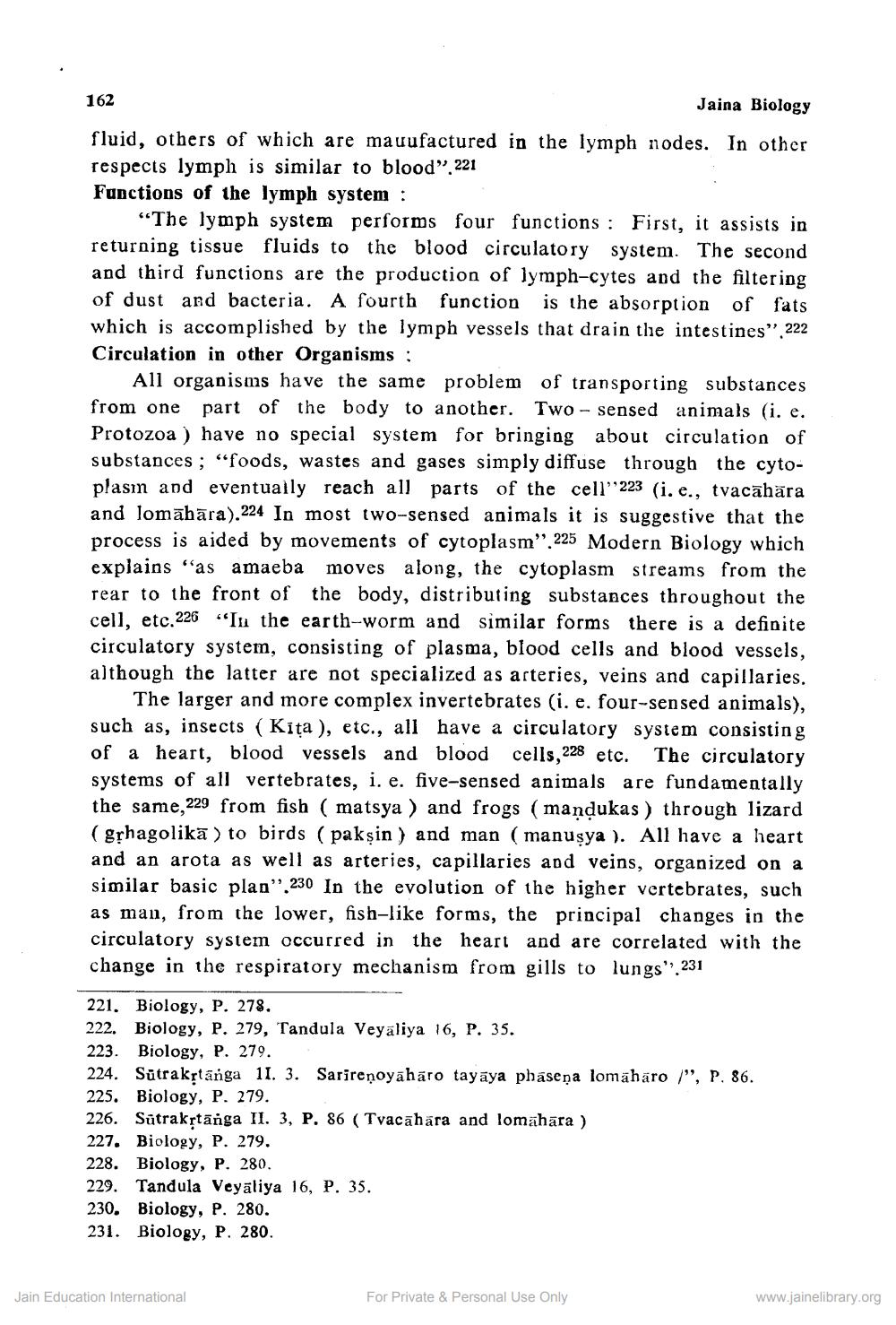________________
162
Jaina Biology
fluid, others of which are mauufactured in the lymph nodes. In other respects lymph is similar to blood". 221 Functions of the lymph system :
“The lymph system performs four functions : First, it assists in returning tissue fluids to the blood circulatory system. The second and third functions are the production of lymph-cytes and the filtering of dust and bacteria. A fourth function is the absorption of fats which is accomplished by the lymph vessels that drain the intestines”. 222 Circulation in other Organisms :
All organisms have the same problem of transporting substances from one part of the body to another. Two - sensed animals (i. e. Protozoa) have no special system for bringing about circulation of substances; "foods, wastes and gases simply diffuse through the cytoplasin and eventually reach all parts of the cell”223 (i.e., tvacāhāra and lomābāra).224 In most two-sensed animals it is suggestive that the process is aided by movements of cytoplasm".225 Modern Biology which explains was amaeba moves along, the cytoplasm streams from the rear to the front of the body, distributing substances throughout the cell, etc.226 "In the earth-worm and similar forms there is a definite circulatory system, consisting of plasma, blood cells and blood vessels, although the latter are not specialized as arteries, veins and capillaries.
The larger and more complex invertebrates (i. e. four-sensed animals), such as, insects ( Kita ), etc., all have a circulatory system consisting of a heart, blood vessels and blood cells, 228 etc. The circulatory systems of all vertebrates, i. e. five-sensed animals are fundamentally the same,229 from fish ( matsya ) and frogs (mandukas ) through lizard (grhagolikā) to birds (pakşin ) and man (manusya ). All have a heart and an arota as well as arteries, capillaries and veins, organized on a similar basic plan".230 In the evolution of the higher vertebrates, such as man, from the lower, fish-like forms, the principal changes in the circulatory system occurred in the heart and are correlated with the change in the respiratory mechanism from gills to lungs' 231
221. Biology, P. 278. 222. Biology, P. 279, Tandula Veyaliya 16, P. 35. 223. Biology, P. 279. 224. Sūtrakrtānga 11. 3. Sarireņoyāhāro tayāya phasena lomāhāro /", P. 86. 225. Biology, P. 279. 226. Sūtrakrtānga II. 3, P. 86 (Tvacāhāra and lomāhāra ) 227. Biology, P. 279. 228. Biology, P. 280. 229. Tandula Veyaliya 16, P. 35. 230. Biology, P. 280. 231. Biology, P. 280.
Jain Education International
For Private & Personal Use Only
www.jainelibrary.org




